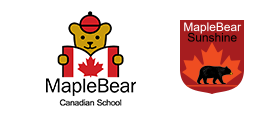

PRIMARY EDUCATION PROGRAMS
The curriculum aims to help student develop fully and especially to foster the joy of learning. We believe that students will definitely succeed in learning when they enjoy it . The program inherits and promotes the educational quintessence of Vietnam and Canada, meets the requirements of the primary education program of the Ministry of Education and Training of Vietnam and provides the best learning experience for children. . Students are fully equipped and qualified to succeed at the next level of study.
The primary curriculum includes:
National Primary Education Program
Maple Bear English Program
Complementary educational programs: Experiential activities – Events – Extracurricular activities, Activities to develop social-emotional skills, Home reading programs, etc.
English science activities encourage children’s natural curiosity, capacity for scientific investigation, and desire to learn new things and improve their life quality. Subsequently, create interest and develop students’ talents and problem-solving abilities related to science and technology. This is also a stepping stone for students to have a career choice in the future.
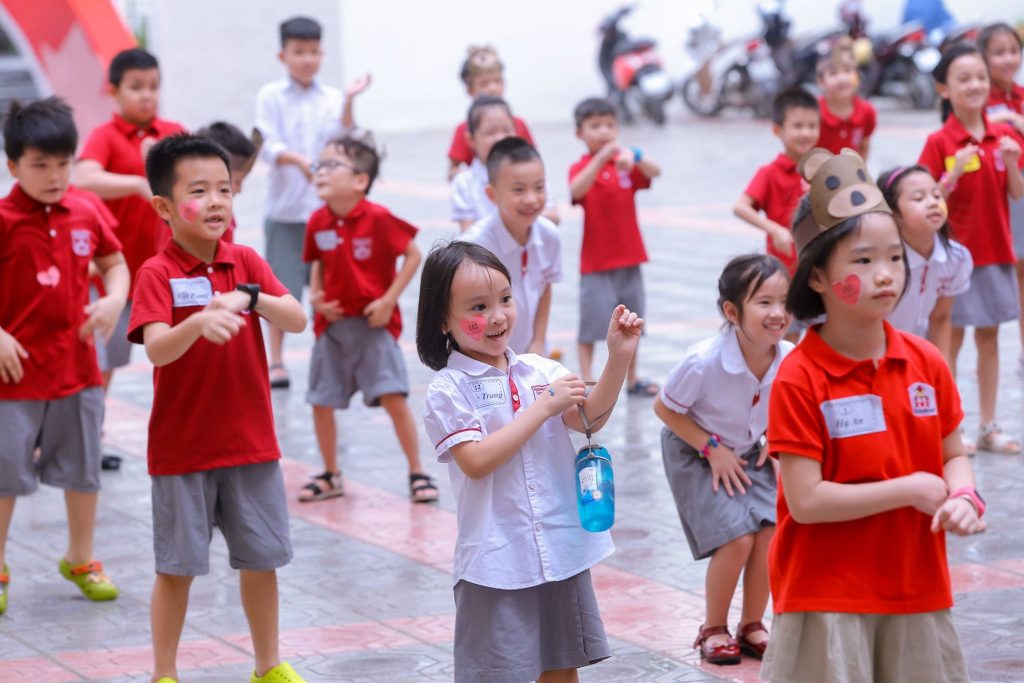
TRAINING SYSTEM
Sunshine System 1
A Vietnamese National Program optimizes learning quality, meets the knowledge base required by the Ministry of Education & Training and supplements the copyrighted Maple Bear English program to help students build a solid foundation of vocabulary and grammar.
Sunshine System 2
A creative, balanced curriculum that provides an effective learning experience that fosters the passion for learning. Students are equipped with a solid academic foundation along with good English language skills to help them succeed in the next level of education.
Maple System
The curriculum meets the requirements of the Ministry of Education & Training program, in addition to increasing and enhancing English competence by offering a variety of practice opportunities and rich language experiences. Students are equipped with a solid academic foundation along with comprehensive English language abilities that help them adapt and succeed in any setting.
ENGLISH PROGRAM
-
The Primary English curriculum uses the copyrighted English Program from Maple Bear Global in addition to the Ministry of Education & Training’s English program to enable students’ English skills to be strengthened, expanded, and improved.
- The English program using additional copyright Maple Bear materials gives students the opportunity to fully develop physically, mentally, and emotionally through the process of approaching English, Science, and Math activities.
- Maple Bear’s (English Language Arts) activities provide opportunities for in depth, thought-provoking learning experiences. Students can develop natural language and higher-order thinking skills in English as their first language thanks to the prominent linguist’s absorbent language learning approach.
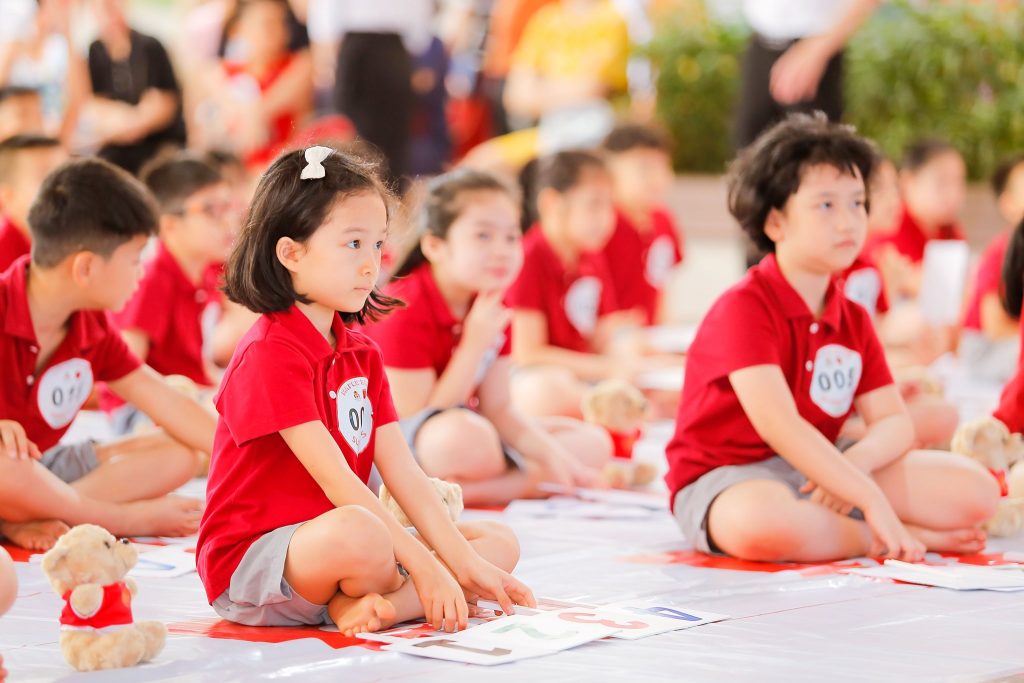
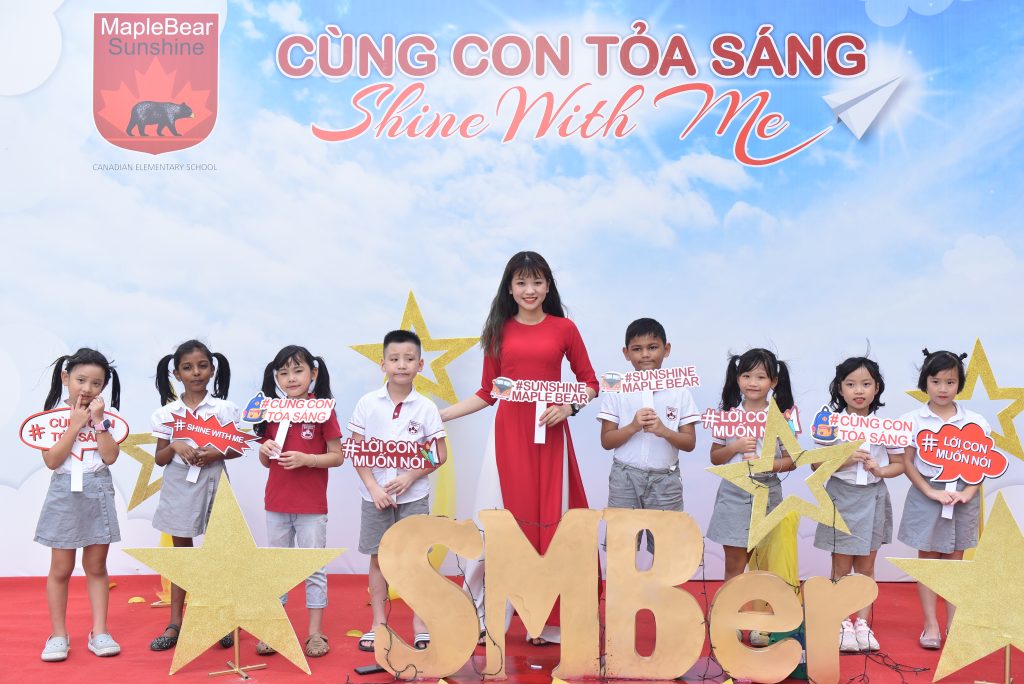
- MAPLE BEAR EDUCATION PROGRAM AND METHODS
- Strengths of Maple Bear Program
- The program is designed to create excitement, challenge and engage students
- Daily practice chances are provided through learning center activities and annually updated programs
- Students are trained to read independently, take on responsibility and develop self-confidence
- The strength of the program in terms of language and arithmetic
- Experiential activities that are practical and meaningful for children
- The program is designed to encourage children’s creativity, inquiry, and curiosity
- Students have the opportunity for global connection and sustainable development
- Reading and philology program: through reading, writing, listening and language practice
- Scientific program & Technology: help foster children’s curiosity through process and design. Then students apply their knowledge to implement the project
2. Osmosis Method
Immersion method is the most effective educational method to help children learn a second language; which is used in Listening-Speaking-Reading-Writing throughout the learning process.
- Why was the osmosis program chosen?
- Researches shows that imersion is the ideal method for young students (from preschool to primary school)
- Students can learn English and Vietnamese at the same time
- How do children learn English through 5 stages of language learning?
- Listen
- Listen & understand
- Listen, understand and speak
- Listen, understand, speak and read
- Listen, understand, speak, read and write
- Teachers can communicate with their children through: speaking speed, repeating phrases, pausing, body language, verbal expression
- Students will experience through activities: Presenting/retelling activities done at home, singing, reading poetry/rhymes, listening to works and playing with words to help children learn naturally
- The importance of bilingual education: Helping students develop in cognitive and linguistic skills.
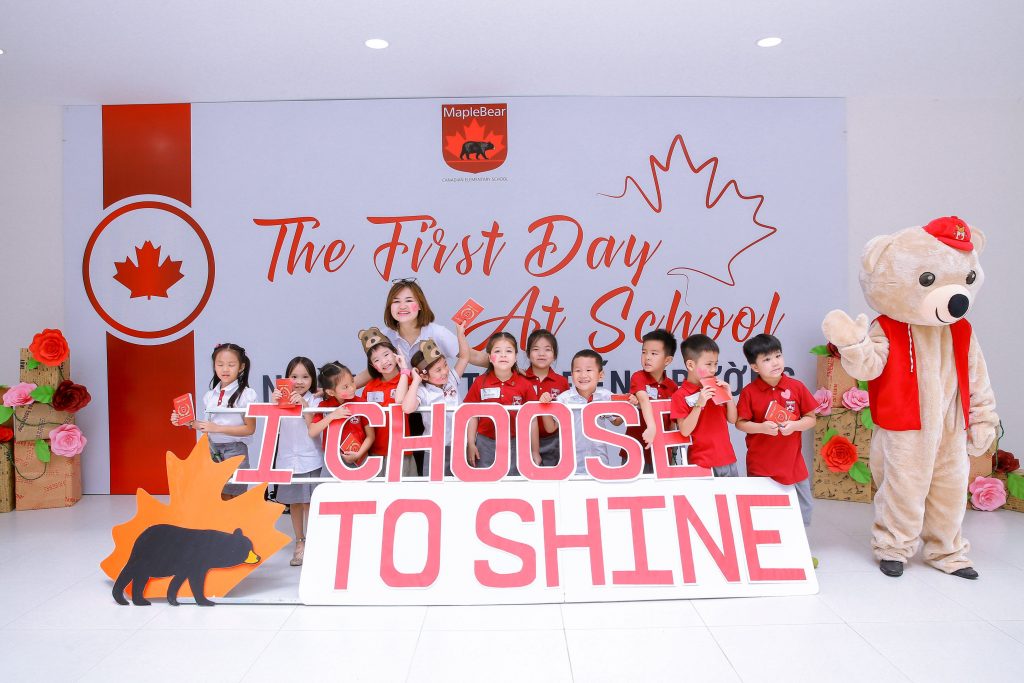
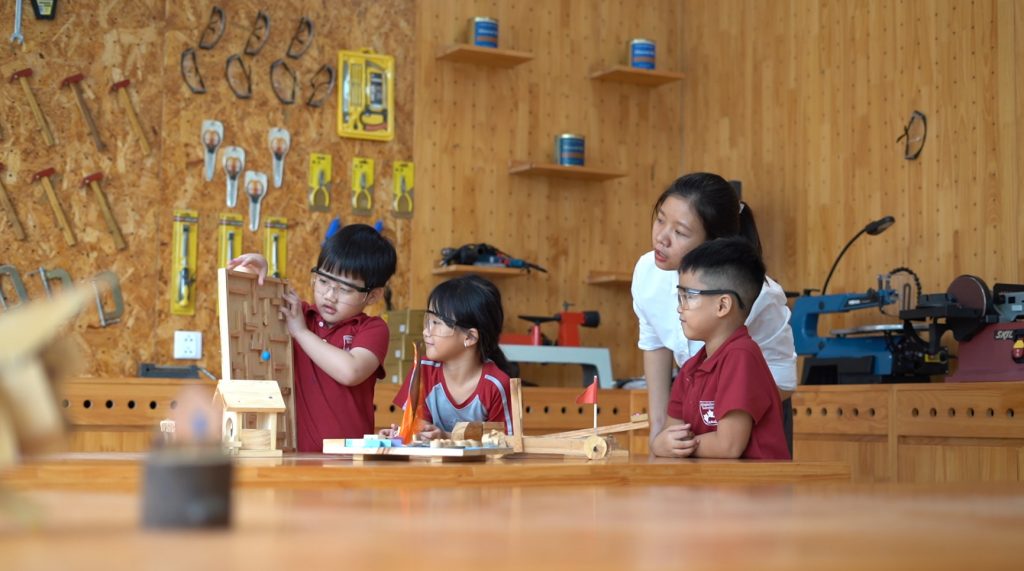
3. Evaluation & Test
- Through in-class assessments, teachers observe and evaluate to prepare for the next lesson/ assessment. These results are then used as a basis for assessing learning outcomes.
- For students: Developing the ability of understanding and self-assessment skills
- According to the Canadian Maple Bear method, the evaluation consists of a sequence of procedures. The assessment includes: ongoing assessment and end-of-term assessment. The Assessment a variety of tools and through different learning tasks and activities
METHODS OF EDUCATION
Based on constructivist theory and outstanding research on teaching and learning worldwide for elementary students, Sunshine Maple Bear Elementary School values the student-centered teaching approach. Teachers are trained and continuously updated with effective teaching methods to ensure the best learning outcomes for students.
The student-centered teaching method is implemented through:
 EN
EN  VN
VN EN
EN